We recently took another cooking class – a tamale workshop at Sur La Table! It was a lot of fun (and the food was phenomenal!), but I had no idea how long it takes to make tamales. It’s definitely more of an activity to be shared and enjoyed with other people, rather than just a recipe to make for a meal. Because of the two-hour class schedule, the instructor had done a few of the steps ahead of time, so we didn’t prepare the pork ourselves and we used masa preparada rather than mixing it from scratch or from masa harina (dry masa). You should be able to buy masa preparada (as well as cornhusks and dried guajillo chiles) at Mexican grocery stores, and in some regular grocery stores as well.
I’m hoping to make these again over the holidays with my family. Having tamales on holidays (such as Christmas) is a tradition in Mexico, and familes often gather to make them together. My family neither lives in nor is from Mexico (although my high school Spanish teacher thought so), but we’ve been scarfing down tamales from Trader Joe’s for at least a decade, so it’s probably about time to practice making them in case Trader Joe’s ever discontinues theirs. Plus, it’s a nice, hands-on activity to do together while catching up. This recipe makes quite a few tamales, so it’s great for a crowd. You can refrigerate or freeze leftovers, but they’re definitely best when served fresh. Feliz Navidad!
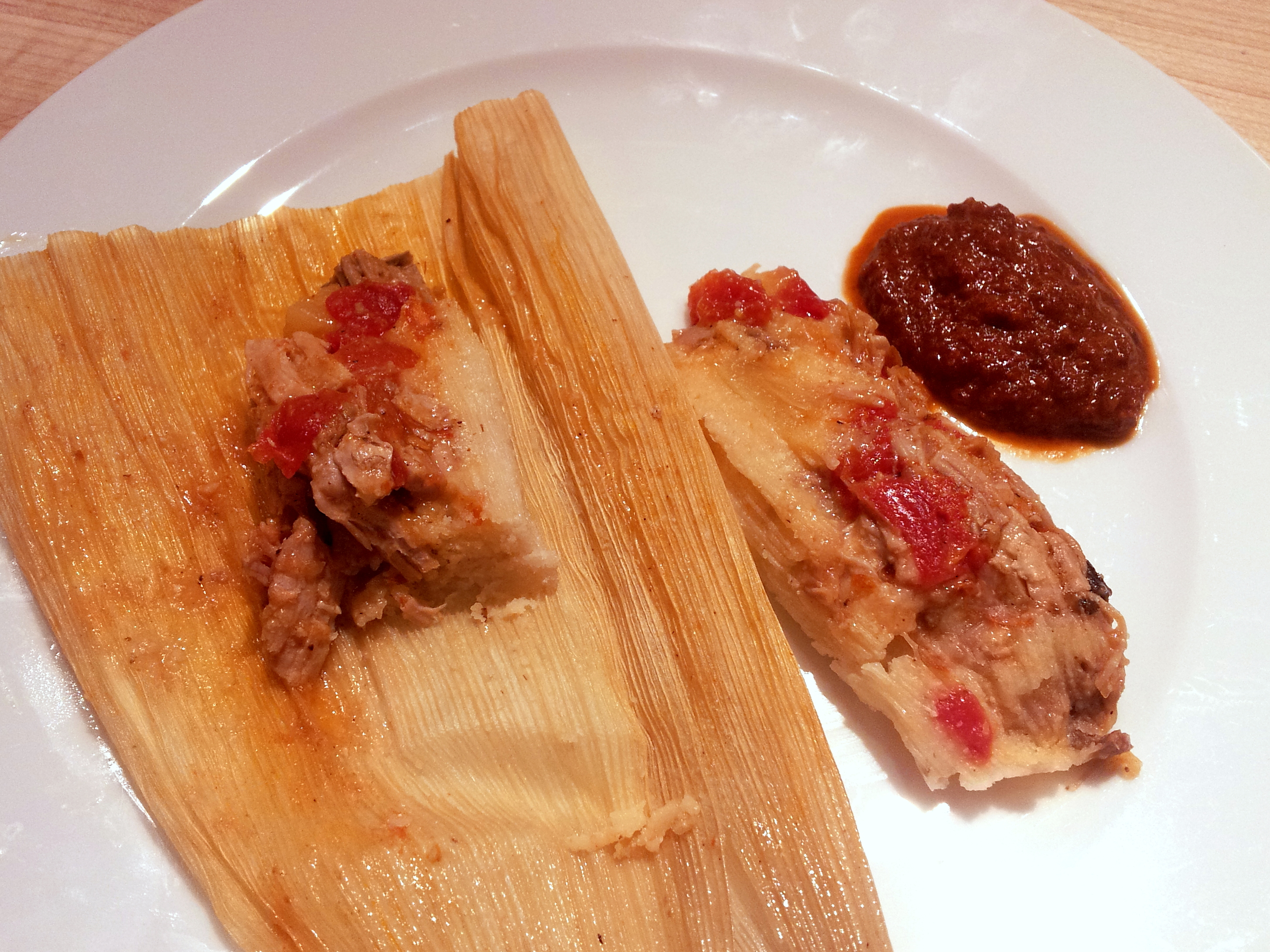
- 9-12 cups masa preparada
- dried cornhusks
- 3 tablespoons vegetable or canola oil
- 1 boneless pork shoulder roast (3-4 pounds)
- 1 large yellow onion, chopped into 1-inch cubes
- 5-6 cloves garlic, minced
- 1 quart (32 ounces) water or chicken stock
- 1 quart (32 ounces) water
- 12 dried guajillo chiles, stems and seeds removed
- 4 tablespoons vegetable oil, divided
- 2 teaspoons ground cumin
- 1 teaspoon ground coriander
- 1 large yellow onion, chopped coarsely
- 4 cloves garlic, minced
- 1 can (15 ounces) fire-roasted tomatoes, drained
- up to 1 cup chicken stock
- 1 tablespoon brown sugar, packed
- 1 cup pineapple tidbits, drained
- salt and pepper
- Preheat oven to 325 degrees.
- In a large ovenproof Dutch oven, heat oil over medium-high heat. Sear pork until golden brown, about 4 minutes on each side. Add onion and garlic and just enough water/chicken stock to cover pork.
- Bring liquid to a simmer, cover, and transfer to preheated oven. Cook until meat is tender, about 2 hours. Remove from oven and let cool. Shred meat and set aside.
- Begin soaking dried cornhusks in hot water before making sauce. Husks need to be soaked for at least 30 minutes before tamales can be assembled. They will float, so keep them submerged with a pan or plate. After soaking, rinse to remove dust and silks, stack in a large mixing bowl and cover with a clean, damp cloth until ready to use.
- In a medium saucepan, bring water to a boil. Add chiles to boiling water and stir. Remove from heat and allow chiles to soften, about 30 minutes. Drain and reserve 2 cups of water. Remove chile stems and seeds. Chop finely.
- In a large, heavy skillet, heat 2 tablespoons oil over medium heat for 1-2 minutes. Add cumin and coriander and cook for 1 minutes. Add onions and sauté until soft, about 3-4 minutes. Add minced garlic and cook for an additional minute. Remove from heat and season lightly with salt and pepper.
- Place onion, garlic, and spice mixture in a food processor or blender, along with chopped chiles. Purée until smooth.
- In large, heavy skillet, heat remaining oil (2 tablespoons) over medium heat for 1-2 minutes. Add mixture from food processor, 2 cups water reserved from soaking chiles, tomatoes, and enough chicken stock to make sauce of a pourable consistency (you may not need any chicken stock at all). Add brown sugar. Simmer for 6-8 minutes.
- Transfer mixture in batches to food processor or blender and purée until smooth. Stir in pineapple tidbits.
- Add guajillo-pineapple sauce to shredded meat, using enough to make it moist but not runny.
- Lay cornhusk flat (rough side facing down and with narrower end pointing toward you).
- Place about 1/4-1/3** cup masa preparada in center of husk. With a wet finger or metal spatula (the kind you’d use to frost a cake), shade into a rectangle about 1/2 inch in thickness. You can also use the sides of the cornhusk to help flatten the masa.
- Spoon 2-3 tablespoons of pork and sauce mixture on top.
- Fold longer sides of cornhusks towards center, wrapping snugly. Fold bottom of cornhusks (the part nearest you) up towards center, creasing firmly. (As you assemble the rest of the tamales, place the finished ones on a plate with the folded side down.)
- Fill a large pot with water almost up to level of steamer, but not so that it will touch tamales. Place tamales in a steamer, either standing upright or lying down with alternating layers facing in opposite directions (like a plus sign). Place lid on pot/steamer and bring water to a simmer. Watch water level and add more water as needed (keep a pot of boiling water on the stove, so that you won’t slow the steaming process by adding cooler water).
- Steam for about 1 hour. To check for doneness, peel back husk – if it peels back smoothly and masa is firm, the tamales are done. If not, rewrap and continue steaming.
- Let tamales cool several minutes before serving. This allows the masa to firm up slightly, since it has a polenta-like consistency when first removed from the steamer.
- Makes about 3 dozen tamales.
- I have not listed a time estimate, since tamales do take quite a bit of time, in all honesty. It's more about the experience, so clear your schedule for a few hours and enjoy the process!
- Our class at Sur La Table used pork, but when I make these at home, I use chicken. The instructor told us that you can even use shredded rotisserie chicken, which saves quite a bit of cooking time.
- The amount of masa preparada that you place in the cornhusks will depend on the size of the cornhusks. Make sure you have enough room to fold the husks securely, otherwise the tamales may fall apart during steaming, so be sure not to fill the husks too full.
- Recipe from Sur La Table.
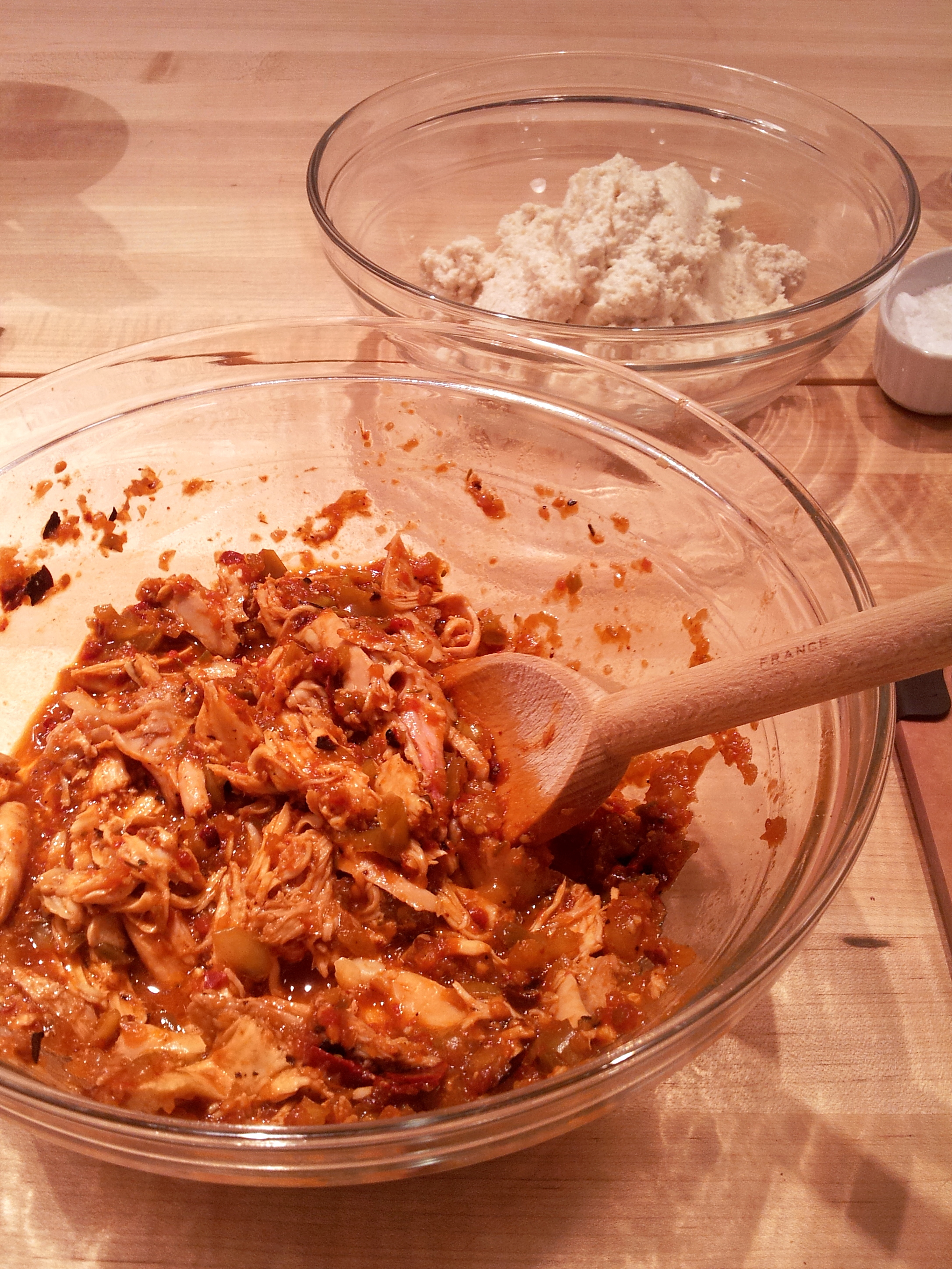
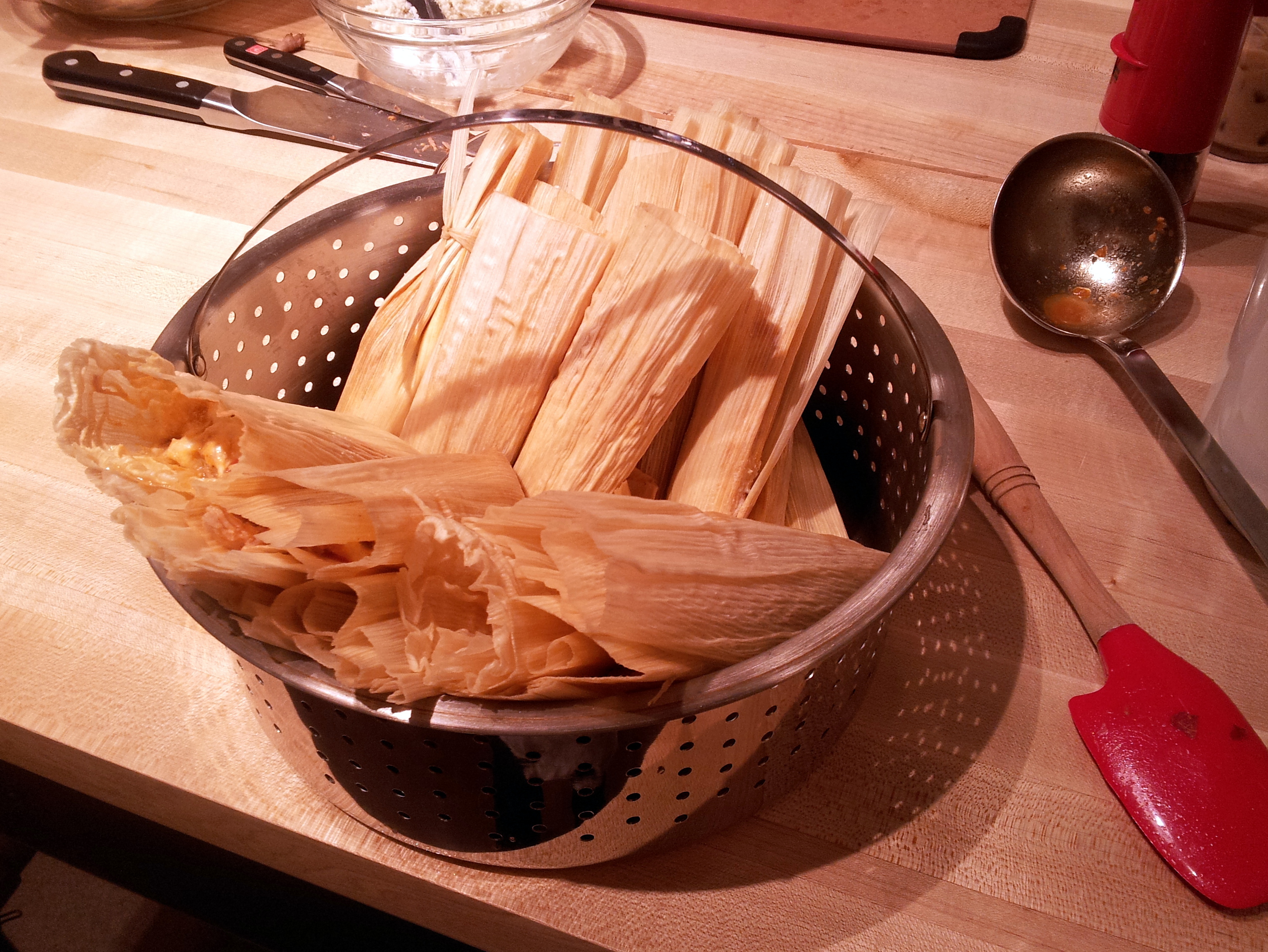
Edit: Here are some notes from when my family and I made these over the holidays.








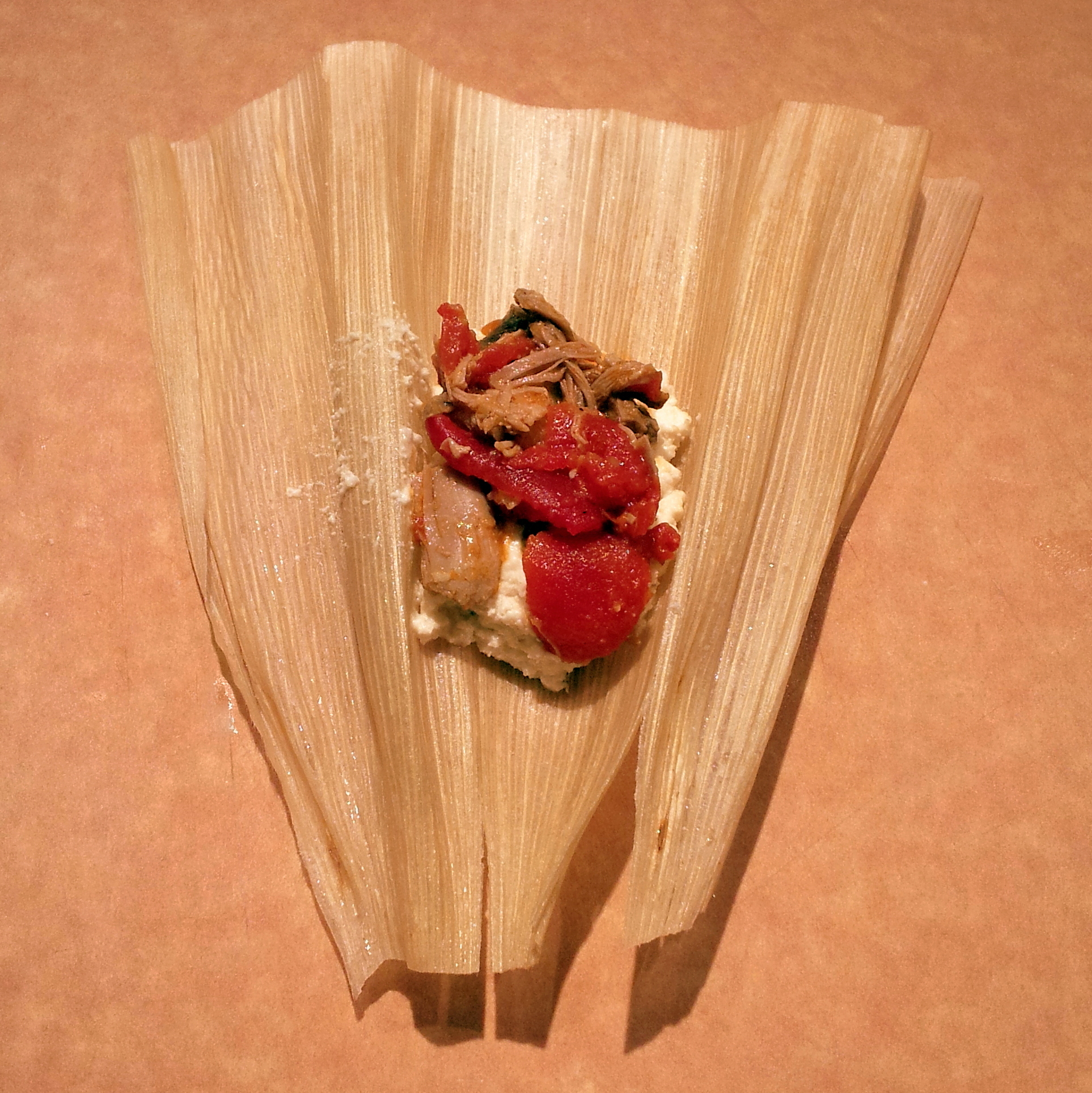
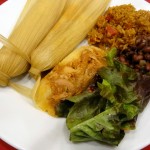



Leave a Reply